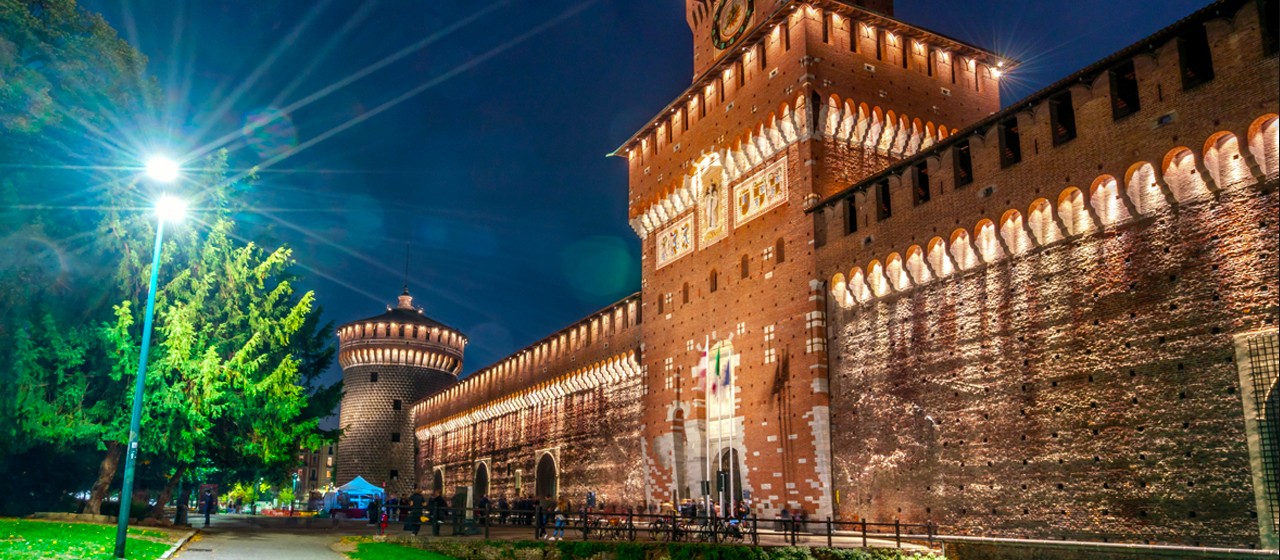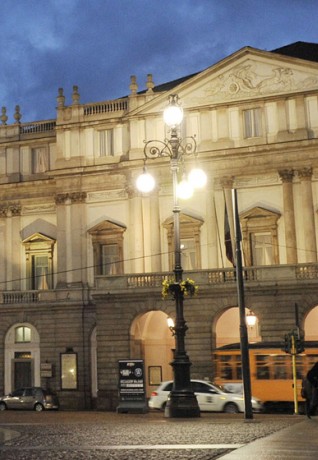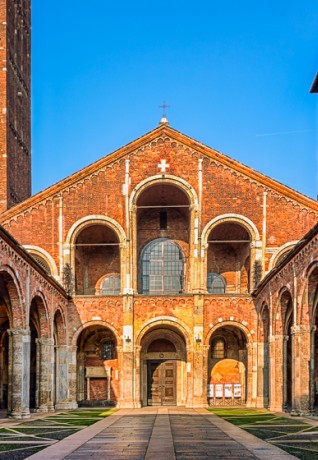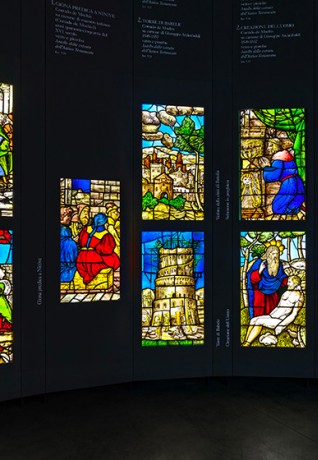Virtual tour of the Castello Sforzesco
From its courtyards to its museums

Discover virtual tours of the city thanks to Milano 360° images: if you have not visited Milano yet, or if you have, and loved it so much that you would like to linger in its beauty all over again; or finally, if you just want to get to know the city better as you wait to book your trip. Enjoy the wonderful sensation of being right up close to the city's most beautiful spots.
Here you can admire Milano's stunning Castello Sforzesco. If you want to discover more about the Castle click here. As you wait to visit the fortress in person, feel free to join us to explore it below.
All images are by Pietro Madaschi - www.360visio.it
As soon as you enter through the distinctive Torre del Filarete, positioned on the Castle’s extensive façade, you’ll find yourself in the vast Cortile delle Armi (Courtyard of Arms), the largest courtyard in the fortress complex, named after its original function, which was to accommodate the garrison stationed here.
On the left side as you enter you will see the Spanish Hospital, once an infirmary for the troops, now the Rondanini Pietà Museum which houses Michelangelo Buonarroti’s final masterpiece.
Now you can enter the actual wing where the dukes and, later, the governors resided: the Ducal Court.
The apartments were situated on the ground and first floors, connected by a staircase with low-rise steps, which enabled the Sforza, Dukes of Milano, to climb to the upper rooms on horseback.
At the far end of the courtyard, you will see the Portico dell'elefante, named after the enchanting and still visible elephant fresco.
A fortress within the fortress - with its high walls and bold corner tower - the internal defensive Cortile della Rocchetta is the most protected place within the Castle. Predictably, the treasure room and the apartments where the Dukes could take refuge in case of attack are situated here.
The Sforza family were Lords of the city and their coat of arms is visible on the vaults of the porticoes that adorn the base of the courtyard on three sides.
The Museum of Ancient Art is one of the most comprehensive in Milano: you can explore some of its splendidly decorated rooms and admire the collections, ranging from late antiquity to the Renaissance.
Start with the room dedicated to Romanesque art, showcasing the great sepulchral monument to Bernabò Visconti; move on to the Gothic section and the Stanza del Gonfalone that houses the 16th century banner representing St. Ambrose, the Archbishop and Patron Saint of Milano.
Continue to the Armory and finally to the room dedicated to Renaissance art.
The Castello Sforzesco houses some real gems within Milanese collections, such as the 1497 artworks in the Sala del Mantegna, where the enthroned Madonna is exquisitely depicted surrounded by several saints.
Move on to the Sala del '400, exhibiting 15th Century art, and the Sala del '600, with 17th Century masterpieces, to end your tour admiring works by Canaletto, the great Venetian master.
Only one place can provide a fitting end to your virtual tour - the Museum dedicated to the unique Rondanini Pietà, Michelangelo Buonarroti’s final and unfinished sculptural masterpiece.
Preserved in the Castle’s ancient Spanish Hospital, the evocative Pietà depicts the corpse of Jesus resting in his mother’s arms before his burial and the embodiment of her grief.
In the final ten years of his life, Michelangelo worked on this sculptural group on several occasions, continuously rethinking and changing its arrangement. Two letters from his pupil Daniele da Volterra recount that the artist tirelessly continued to chisel this work until a few days before his death, at the age of eighty-nine. It was of great significance to him as he considered it his final work and testament.
You can also explore the Castello Sforzesco on Google Arts & Culture.
Among all the available Castello tours, try the one along the battlements; also spare the time for a visit to the Museo dei Mobili e delle Sculture Lignee (Furnishings and Wooden Sculptures).

 Log in
Log in


